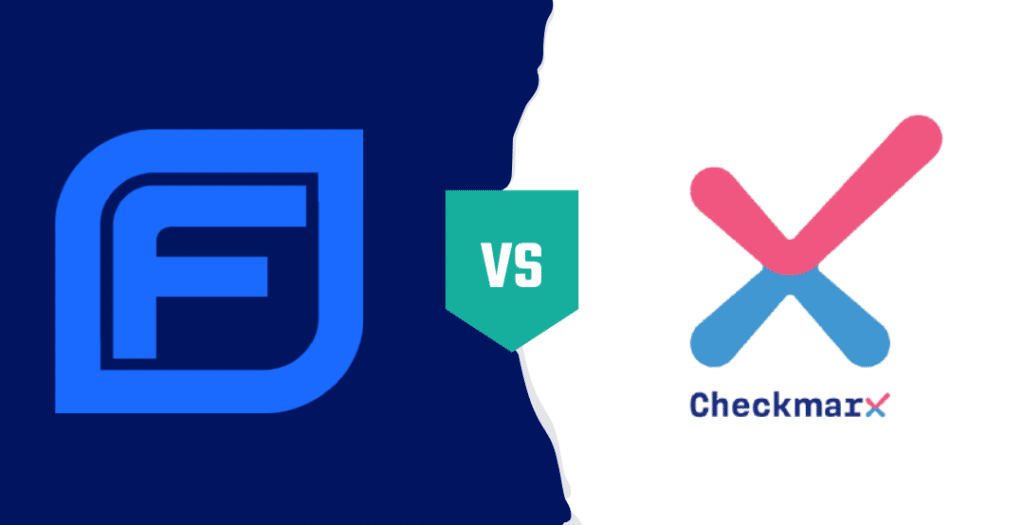Discover Checkmarx, the security analysis platform for software applications that helps you identify, prioritize and correct vulnerabilities!
What is Checkmarx?
Checkmarx is a security analysis platform for software applications. In other words, it detects potential security flaws in software source code. The solution helps developers to identify and correct vulnerabilities early in the development process, thus ensuring the security of the application even before it goes into production.
Why use Checkmarx for application security?
Security flaws in software applications can have disastrous consequences, ranging from data loss and ransomware attacks to breaches of user confidentiality. The costs associated with these incidents can be enormous, not to mention the damage to a company’s reputation. Checkmarx helps avoid these problems by detecting vulnerabilities before they are exploited.
Identify security vulnerabilities
Checkmarx identifies security vulnerabilities by analyzing source code using various techniques, including one in particular called SAST (Static Application Security Testing). It scans code without executing it to detect patterns of known vulnerabilities.
Checkmarx uses a base of rules and algorithms to spot these flaws in the code, then provides detailed reports on the vulnerabilities found, with suggestions for correcting them.
Remedy security breaches quickly
Checkmarx provides detailed recommendations and code examples for correcting identified vulnerabilities. It integrates this information directly into development environments (IDEs), enabling developers to see problems in real time and resolve them immediately. What’s more, Checkmarx applies a criticality level to detected vulnerabilities, helping teams to prioritize fixes.
Easy integration into the development cycle
It is advisable to initiate its implementation at the very start of the project. This will avoid having to deal with a large number of feedbacks when the tool is implemented, and potentially delay the implementation of corrective measures due to stress, pressure, etc. However, as the technical environment evolves, you will need to update your detection rules regularly.
Ideally, the tool should be integrated into the development pipeline, so that it is executed, for example, at each commit or at least before each merge. However, this implies that the execution of the tool should be rapid (< 3 minutes) so as not to increase the feedback loop on the development side (it is generally possible to parallelize).
The advantage of this integration is that it’s turnkey and can be run on modified lines of code, so you can gradually improve the security of your code. It’s also ideal when the tool is implemented at the very beginning of a project.
If the tool is slow, you can always schedule its execution (once a day / once a week), but the risk here is that the development team will lose track of it.
Checkmarx key features
Checkmarx has evolved to offer a variety of features, including the following:
- Scan source code for security vulnerabilities without execution.
- Identify vulnerabilities in the open-source libraries used.
- Integration into development pipelines for continuous analysis.
- Provides vulnerability reports with suggested fixes.
- Classifies vulnerabilities by severity for prioritized correction.
- Helps you comply with security standards (OWASP, PCI-DSS, etc.).
Let’s take a closer look at some of its features.
Static code analysis (SAST)
Static code analysis is a technique that evaluates source code without executing it.
It is used to identify errors, security vulnerabilities and problems of compliance with coding standards.
Using automated tools, this method identifies potential flaws, such as SQL injections, and proposes solutions to correct them.
It’s a key process for reinforcing software quality and security right from the start of development.
Dynamic Application Analysis (DAST)
Dynamic Application Security Testing (DAST) is a security testing approach that analyzes running applications for potential security vulnerabilities.
Unlike Static Application Security Testing (SAST), which examines source code without launching the application, DAST simulates attacks in real time to identify exploitable vulnerabilities.
Interactive safety tests (IAST)
Interactive Security Testing (IAST) is an innovative method of securing applications that combines the strengths of static (SAST) and dynamic (DAST) security testing.
Unlike traditional approaches, which focus solely on source code or running applications, IAST observes the application in real time to detect vulnerabilities.
IAST works by integrating directly into the application’s runtime environment, enabling it to monitor data flow, analyze code, and observe user interactions.
This continuous, contextual monitoring helps to identify more complex security flaws, such as business logic errors or integration problems, which might go unnoticed with traditional SAST or DAST testing.
Software composition analysis (SCA)
Software Composition Analysis (SCA) is an essential approach to securing modern applications, which increasingly rely on open-source components and third-party libraries.
By using these elements, developers gain in efficiency, but they also expose themselves to potential vulnerabilities.
This is where SCA comes in.
As part of Checkmarx, SCA offers complete visibility over the open-source components integrated into your projects.
This tool automatically scans your application’s dependencies to detect known vulnerabilities, assess licensing risks, and spot obsolete or potentially dangerous versions of the libraries used.
Here’s how Checkmarx SCA can benefit your team:
- Detection of known vulnerabilities: SCA quickly identifies security flaws in open-source components, enabling you to take corrective action before they are exploited.
- License management: The tool helps you keep track of the licenses associated with the components you use, ensuring that your application remains compliant with legal requirements and avoiding the risk of litigation.
- Update recommendations : Checkmarx SCA provides recommendations on updated component versions, enabling you to keep your application secure and up to date.
How does Chechmarx work?
Integration into the development process
Checkmarx is integrated into the development cycle in several key stages.
Firstly, Checkmarx integrates with development environments (IDEs) and continuous integration pipelines (CI/CDs) to enable automatic analysis of source code and open-source components at every stage of development.
Vulnerabilities are rapidly detected and reported to developers, who receive precise recommendations for their correction.
This process ensures proactive and continuous security, enabling vulnerabilities to be corrected as soon as they appear, and secure applications to be delivered as soon as they go into production.
Analysis and reporting methodology
Checkmarx uses an analysis methodology that combines static testing (SAST) and software composition analysis (SCA) to detect vulnerabilities in source code and open-source components.
Once the analysis is complete, Checkmarx generates detailed reports that classify vulnerabilities by severity level and provide recommendations for correcting them.
These reports are integrated directly into developers’ tools, facilitating rapid and effective correction of identified vulnerabilities throughout the development cycle.
Collaboration between developers and security teams
Checkmarx integrates with development environments (IDEs) and CI/CD pipelines, enabling developers to receive alerts on vulnerabilities as soon as they are detected. Security teams configure analysis rules and monitor results, while developers patch vulnerabilities in real time, with recommendations provided by the tool.
This continuous interaction fosters a DevSecOps culture, where security becomes a shared and integrated responsibility throughout the development cycle, ensuring more secure and compliant software.
The Checkmarx advantage
Enhanced software security
Reduced costs for patching vulnerabilities
Compliance with safety standards
Thanks to the different types of scan Checkmarx offers, vulnerabilities can be identified at the earliest stages of development.
By detecting security flaws before the code reaches production, development teams can correct problems more quickly, reducing security risks and minimizing the chances of exploitation in production.
Checkmarx helps reduce the cost of patching vulnerabilities by detecting security issues earlier in the development cycle, where fixes are cheaper and easier to implement.
By integrating the tool into development environments (IDEs) and CI/CD pipelines, developers can receive instant notifications of security flaws, enabling them to resolve them immediately before they accumulate and require costly interventions in the testing or post-deployment phase.
This preventive approach saves time and resources, while strengthening overall application security.
Checkmarx helps companies comply with security standards by providing rigorous security analyses that are aligned with best practices and industry standards, such as OWASP Top 10, PCI-DSS, and GDPR.
The tool generates detailed reports that not only identify vulnerabilities, but also provide specific recommendations for aligning development with these compliance requirements.
By integrating Checkmarx into the development process, companies can proactively demonstrate their commitment to compliance, while reducing the risk of sanctions linked to breaches of security standards.
Checkmarx compared with other AST solutions
Checkmarx vs Veracode

Checkmarx and Veracode are two widely used application security solutions, each with its own distinct advantages.
Checkmarx is appreciated for its ease of integration into development environments, its scanning speed, and its static analysis (SAST) and software composition (SCA) capabilities.
However, some users find its pricing and licensing models lacking in clarity.
Veracode, on the other hand, offers a full range of tests, including SAST, DAST, and IAST, with accurate reporting and more transparent pricing.
Although both solutions are considered expensive, they offer an excellent return on investment by detecting vulnerabilities early in the development cycle.
Ultimately, the choice between Checkmarx and Veracode will depend on your team’s specific needs in terms of functionality and budget.
Checkmarx vs Fortify

Checkmarx and Fortify are two recognized application security solutions, each offering distinct advantages.
Checkmarx is appreciated for its ease of integration into modern development environments, its scanning speed, and its clear, actionable reports, making it ideal for DevSecOps teams.
Fortify, on the other hand, stands out for the depth of its analyses and its ability to manage complex environments, although it can be perceived as heavier and more expensive.
The choice between Checkmarx and Fortify will depend on your company’s specific needs, notably in terms of environment complexity, budget, and preference for a lighter or more comprehensive solution.
Checkmarx vs. SonarQube

Checkmarx and SonarQube address different needs in the software development cycle.
Checkmarx is ideal for organizations looking to strengthen the security of their applications with in-depth vulnerability scans.
SonarQube, on the other hand, is more focused on improving overall code quality, while offering basic security checks.
The choice between the two will depend on your priorities: in-depth application security with Checkmarx, or a more general solution for code quality and security with SonarQube.
Checkmarx use cases
Checkmarx is used in a variety of situations to enhance application security throughout the development cycle.
Here are some common use cases:
Securing web applications
Checkmarx is an essential tool for securing web applications by integrating directly into developers’ workflows.
Web applications, which are constantly exposed to users via the Internet, are particularly vulnerable to attacks such as SQL injections, XSS flaws and other common threats.
By configuring Checkmarx to automatically scan source code at every stage of development, these vulnerabilities can be identified and corrected before the application goes live.
In addition, Checkmarx examines open-source components and third-party libraries integrated into the web application, reducing the risks associated with the use of external code.
The tool’s detailed reports provide clear recommendations for remedying security issues, ensuring that the web application remains protected against cyberthreats.
Securing mobile applications
Checkmarx is an essential tool for strengthening the security of mobile applications by integrating directly into the development process.
Mobile applications, used on millions of smartphones and tablets, are particularly vulnerable to threats such as unauthorized access to sensitive data, code injections, and security configuration flaws.
Using static security analysis (SAST), Checkmarx scans the source code of mobile applications to detect these vulnerabilities specific to Android and iOS environments.
What’s more, Checkmarx integrates with CI/CD pipelines to perform automatic scans on every build, ensuring that vulnerabilities are identified and corrected before the app is released to the stores.
In this way, Checkmarx helps developers protect their mobile applications against cyberthreats, ensuring a secure experience for end-users.
Securing microservices and APIs
Checkmarx secures microservices and APIs by integrating security analysis throughout the development cycle, which is crucial for these modern architectures where components often communicate via APIs exposed on the Internet.
Using static security analysis (SAST), Checkmarx scans microservices and API code to identify vulnerabilities such as SQL injections, authentication flaws and security misconfigurations.
The tool also checks that secure development practices are followed, such as API key management and protection of sensitive data.
Thanks to its integration into CI/CD pipelines, Checkmarx enables automatic scans with every update, ensuring continuous protection against potential threats that could exploit these vulnerabilities.
Qim info helps you implement Checkmarx in your organization
Discover our Cloud & DevOps department
Optimise your productivity and improve your agility with our Cloud services







